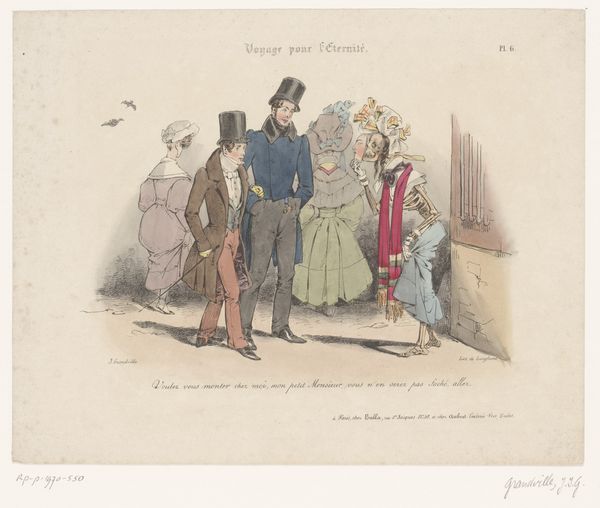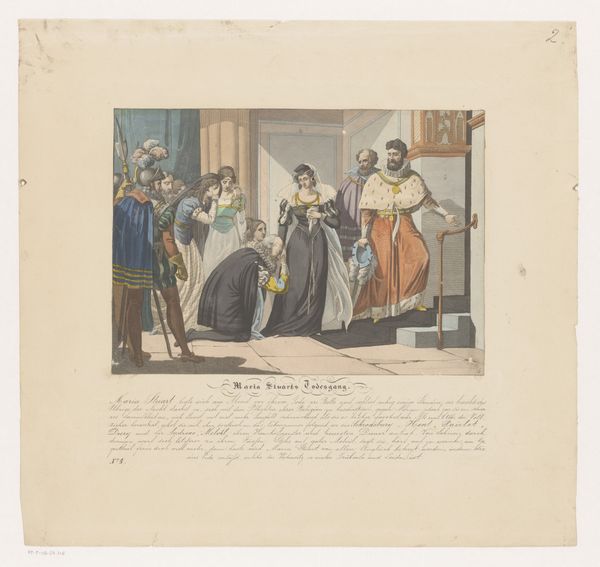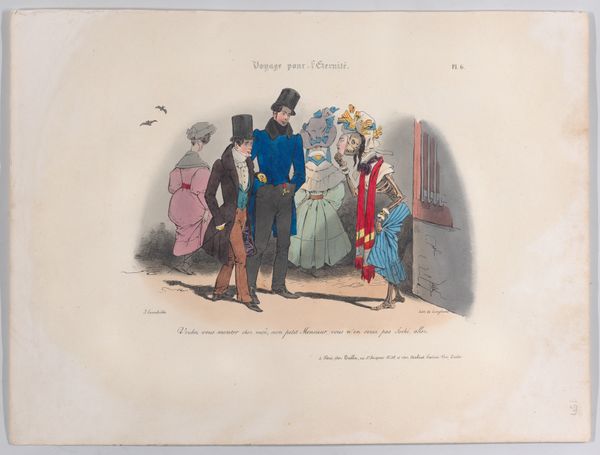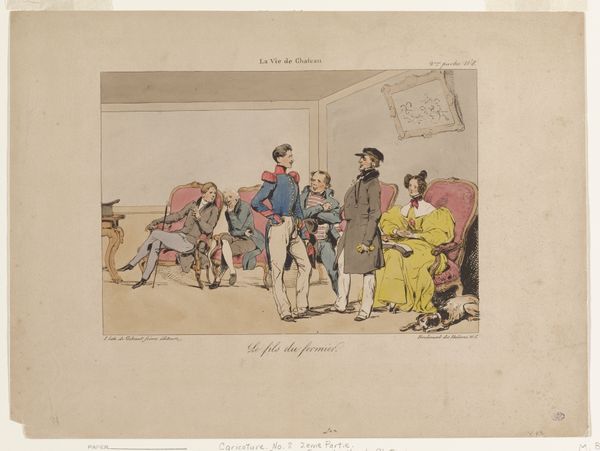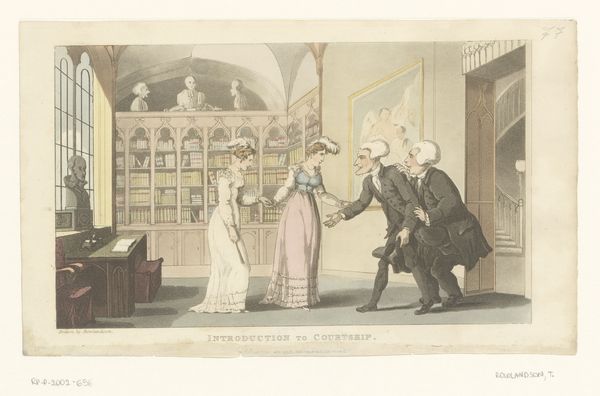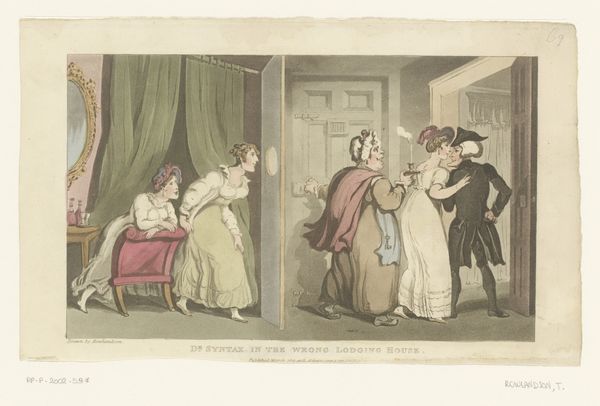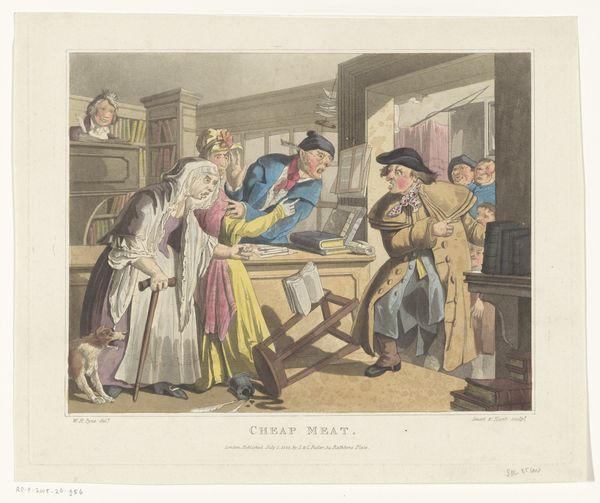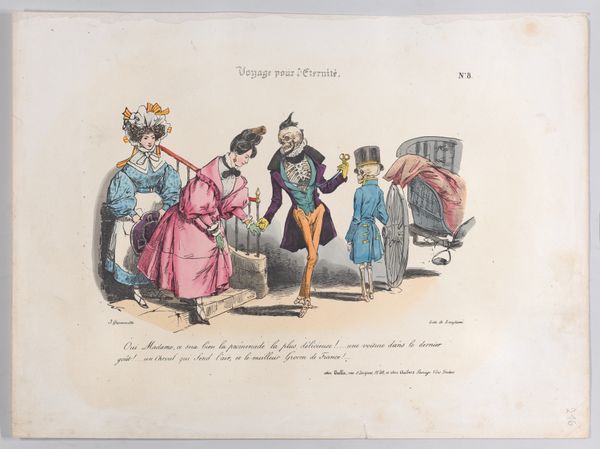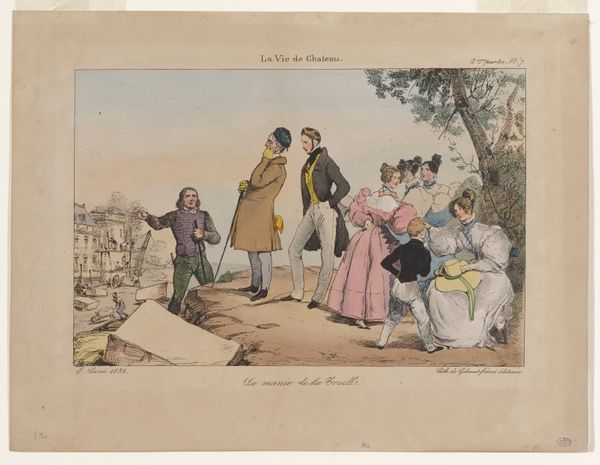
Caricature. No. 4. 2eme Partie. Les anglais du voisinage. 1833
0:00
0:00
#
aged paper
#
pastel soft colours
#
muted colour palette
#
photo restoration
# print
#
light coloured
#
archive photography
#
historical fashion
#
france
#
watercolour illustration
#
soft colour palette
#
watercolor
Dimensions: 7 3/4 x 8 7/8 in. (19.69 x 22.54 cm) (image)
Copyright: Public Domain
Editor: This print, "Caricature. No. 4. 2eme Partie. Les anglais du voisinage." by Eugène-Louis Lami, created in 1833, strikes me as a very staged and somewhat satirical scene. The way the figures are arranged and the expressions on their faces give the sense of a carefully constructed performance. What’s your take on it? Curator: It is interesting to see it through the lens of performance. I think you’re onto something regarding the theatrical quality. But have you considered the historical context of Anglo-French relations in the 1830s? Editor: I haven't really. Tell me more. Curator: Well, this was a period of relative peace, but also ongoing rivalry and mutual stereotyping between the two nations. This print, whose title translates to "The English of the Neighbourhood," appears to depict an encounter between French and English families. Is it intended to critique the perceived stuffiness or formality of the English? Editor: I see. It’s like Lami is holding up a mirror to cultural differences and maybe exaggerating them for comedic effect. The very formal greeting seems at odds with the implied intimacy of neighbors. It brings attention to cultural biases embedded within seemingly innocent social interactions. Curator: Precisely. Consider how such images circulated and shaped public opinion. Lami's print participated in constructing, and perhaps reinforcing, national identities and stereotypes through visual representation. It's fascinating to think about its role in shaping perceptions and solidifying "us versus them" mentalities. Editor: That's a perspective I hadn't considered fully. So, beyond just being a funny image, it’s engaging in a wider political and cultural discourse. Thanks! Curator: My pleasure! Examining art as a product and shaper of cultural narratives always reveals so much.
Comments
No comments
Be the first to comment and join the conversation on the ultimate creative platform.

